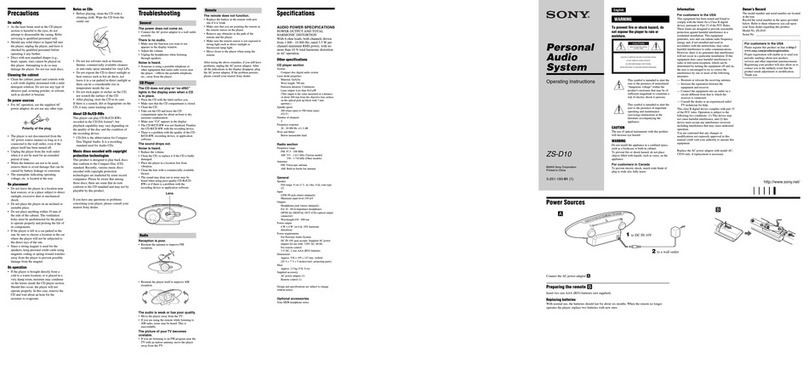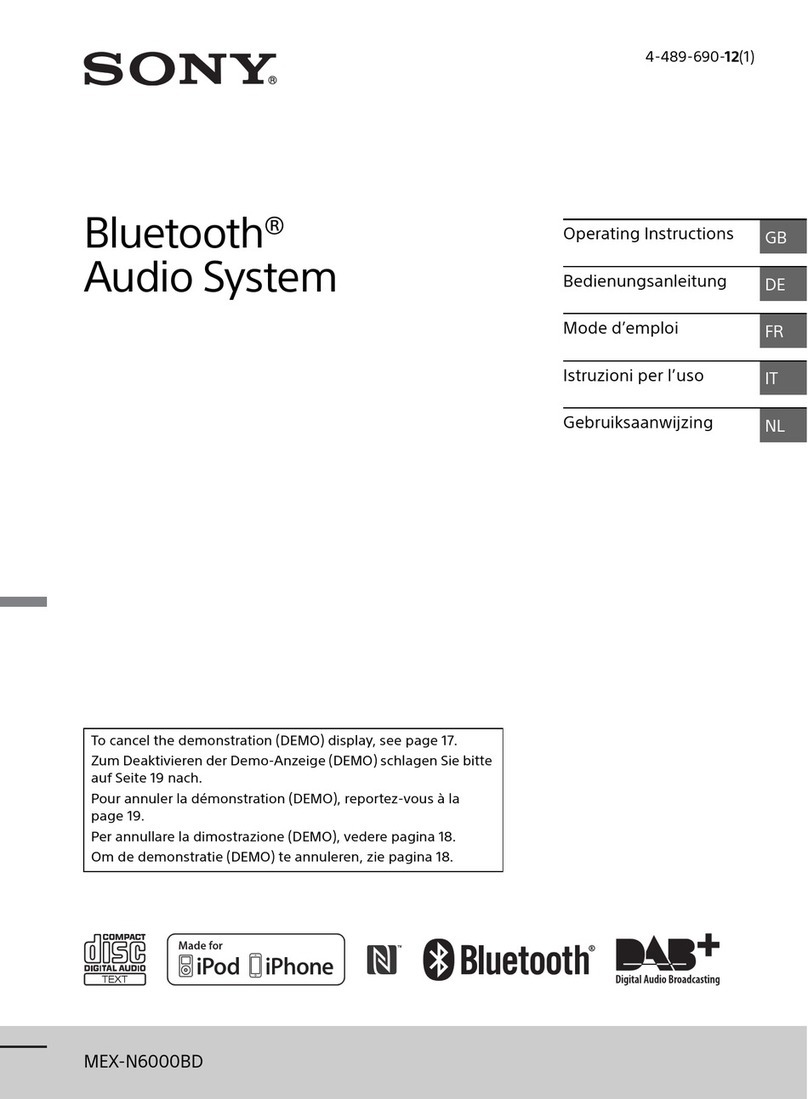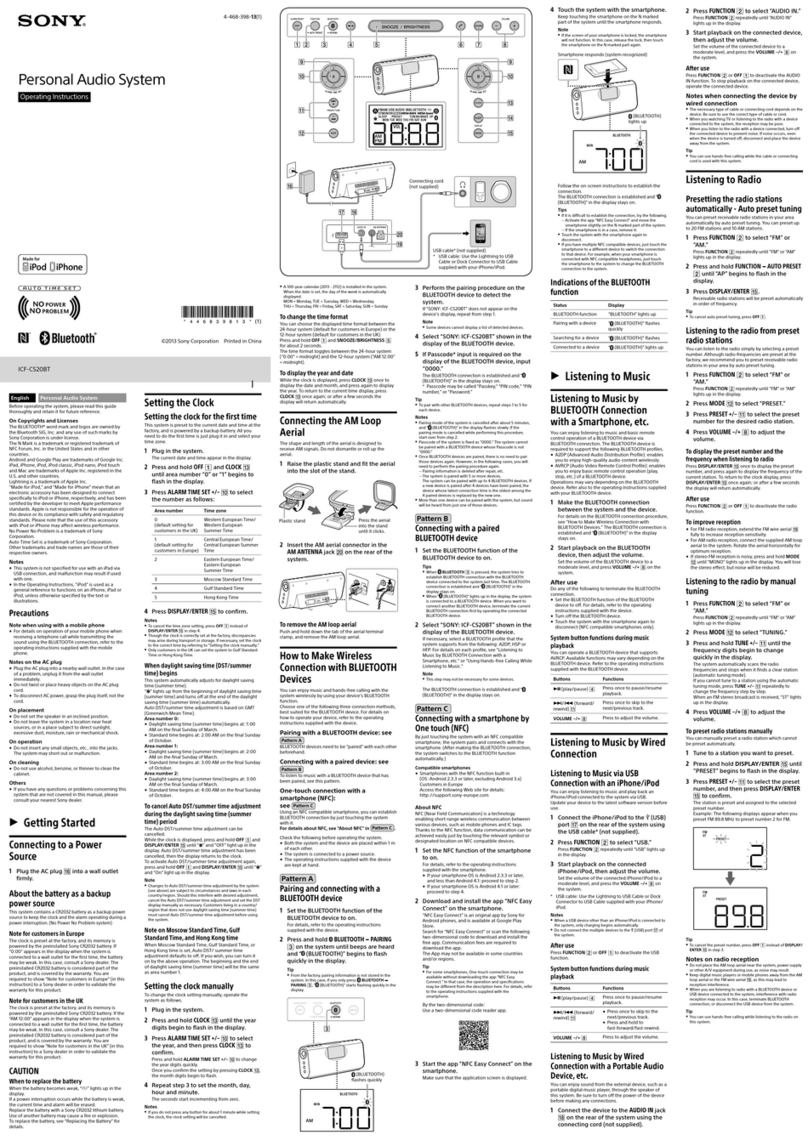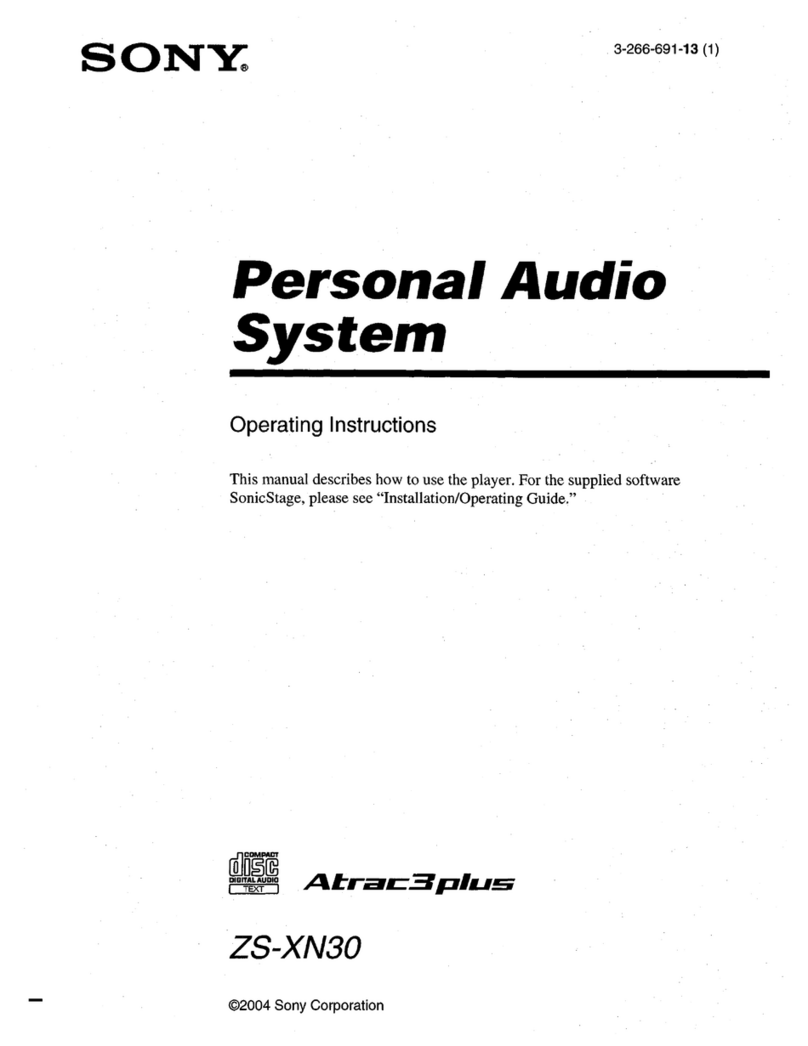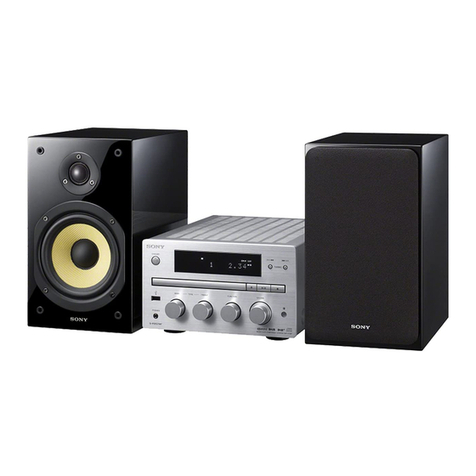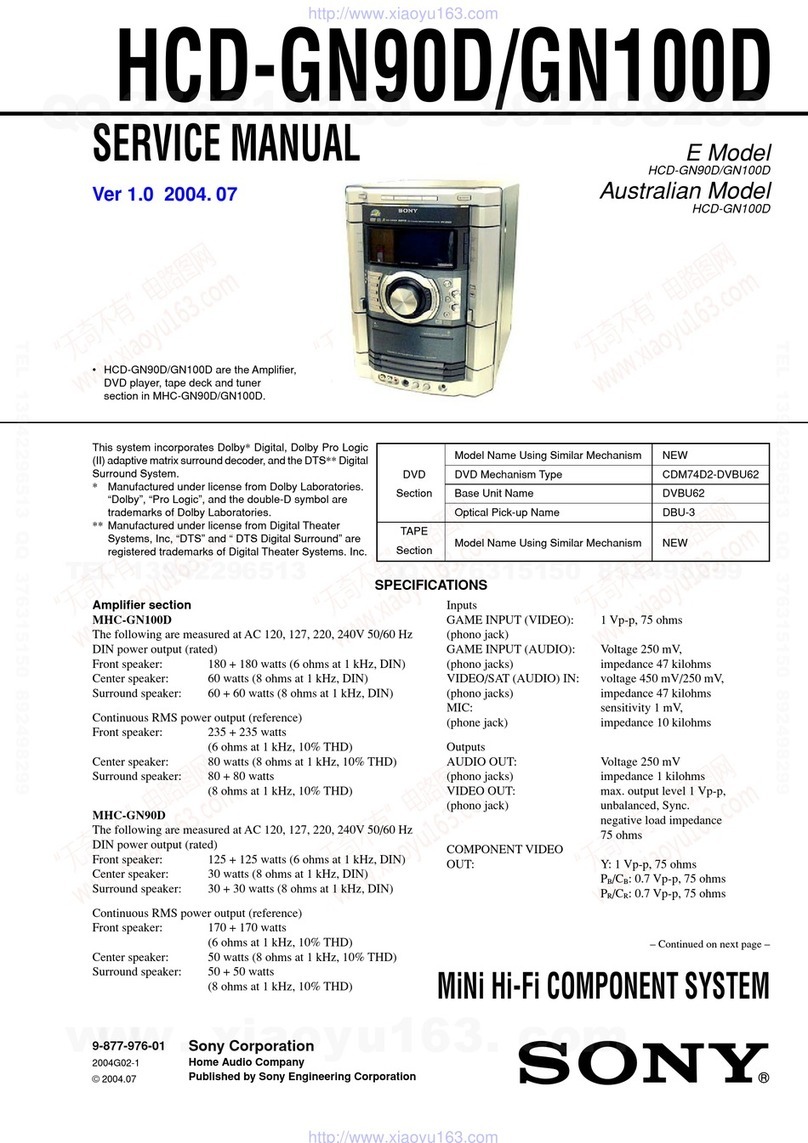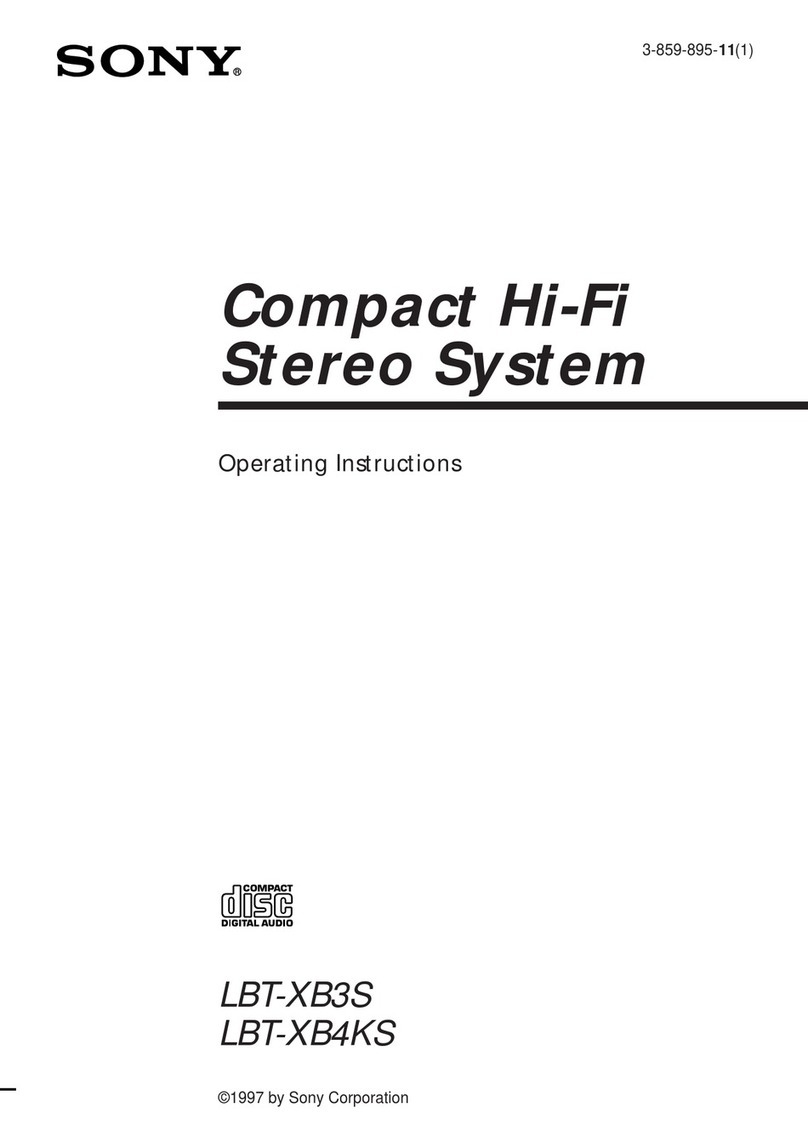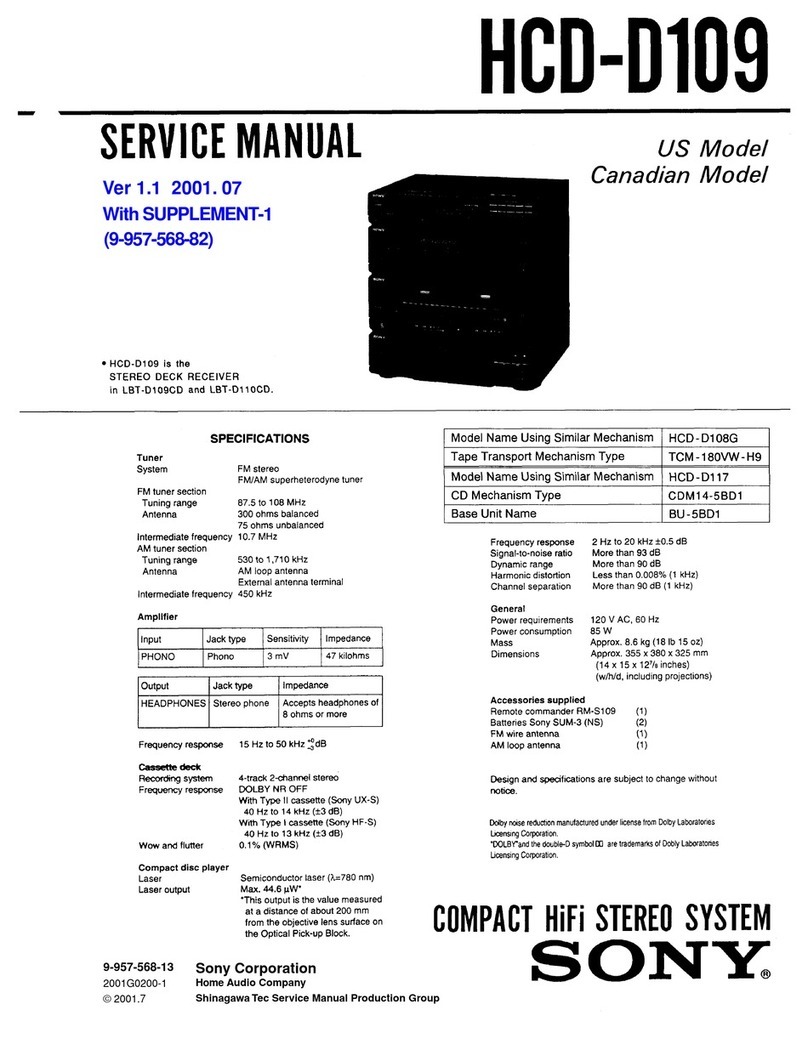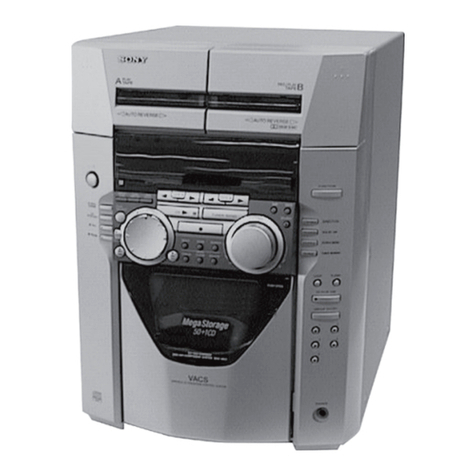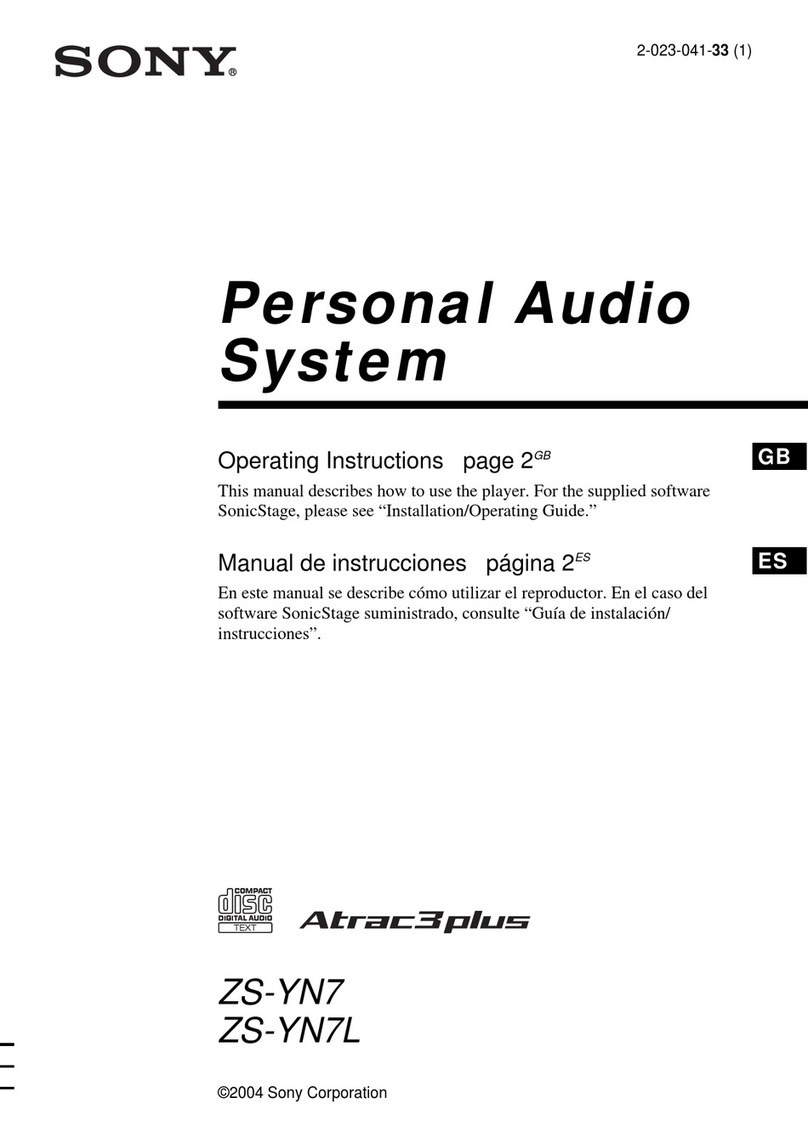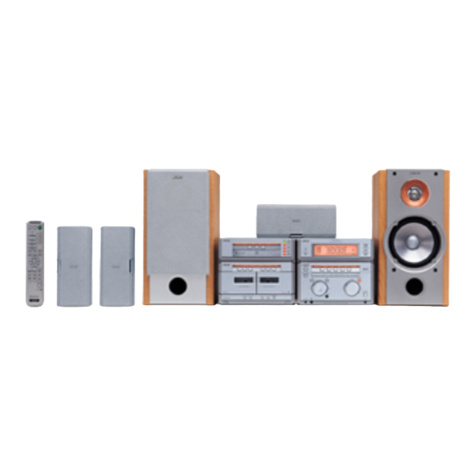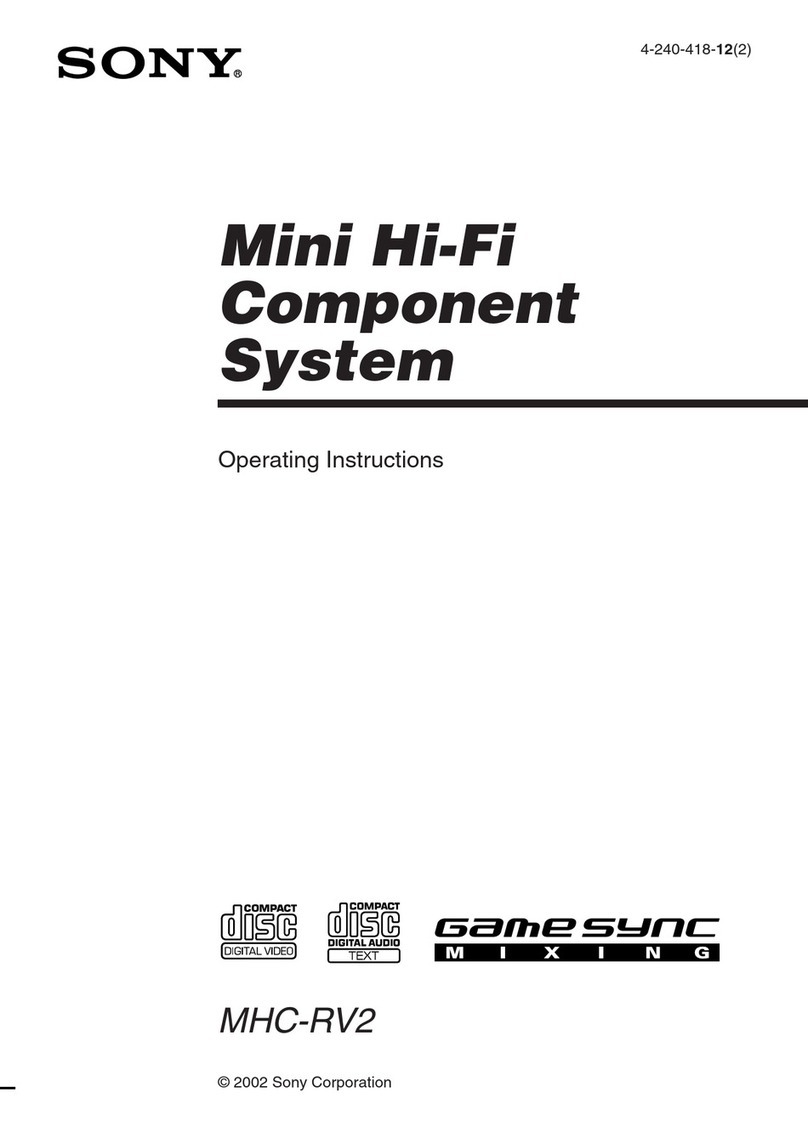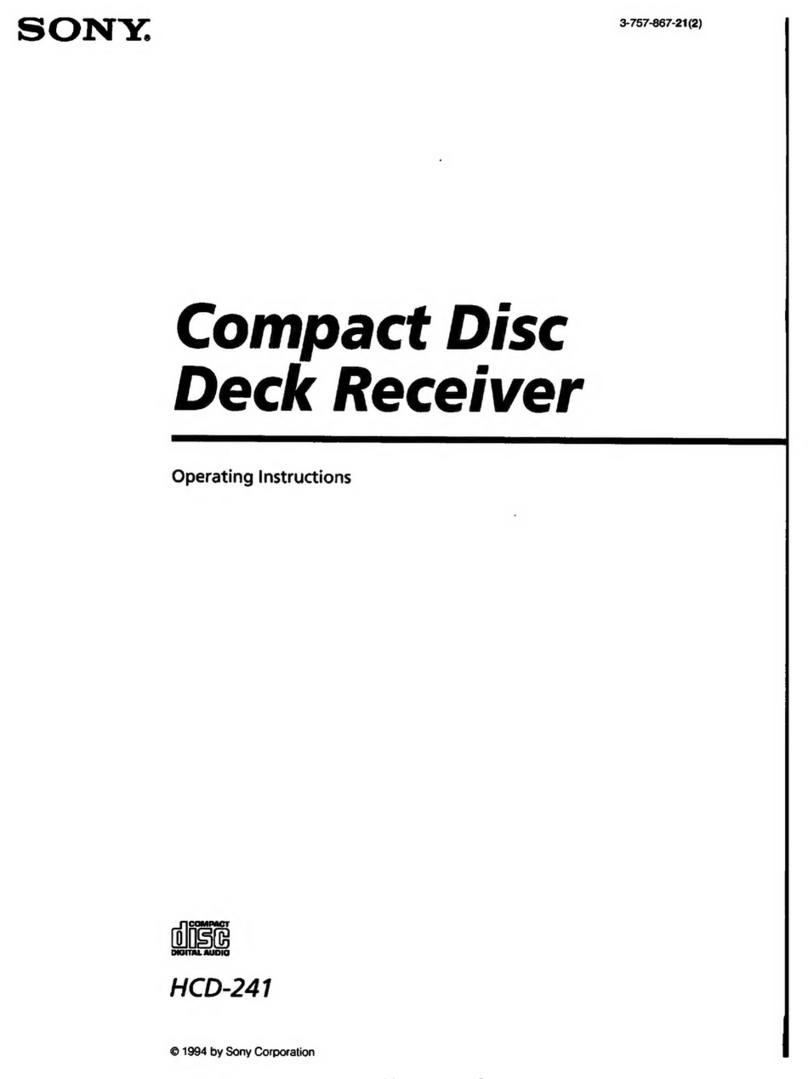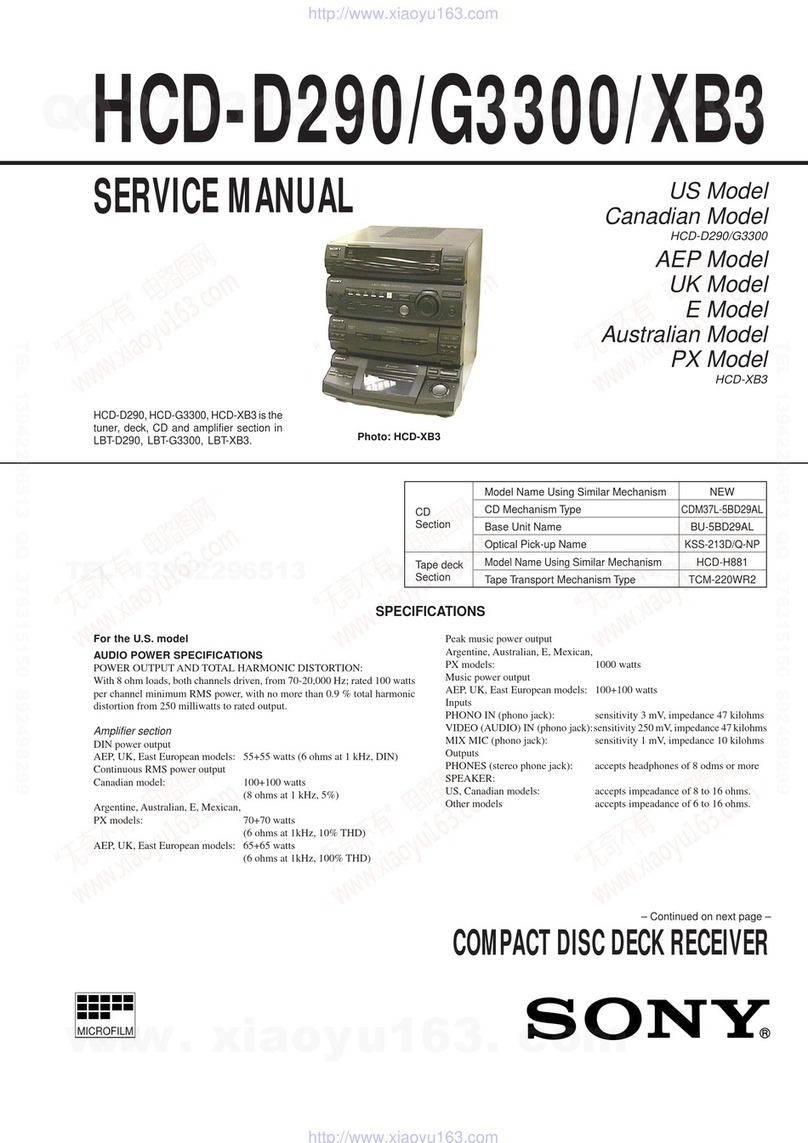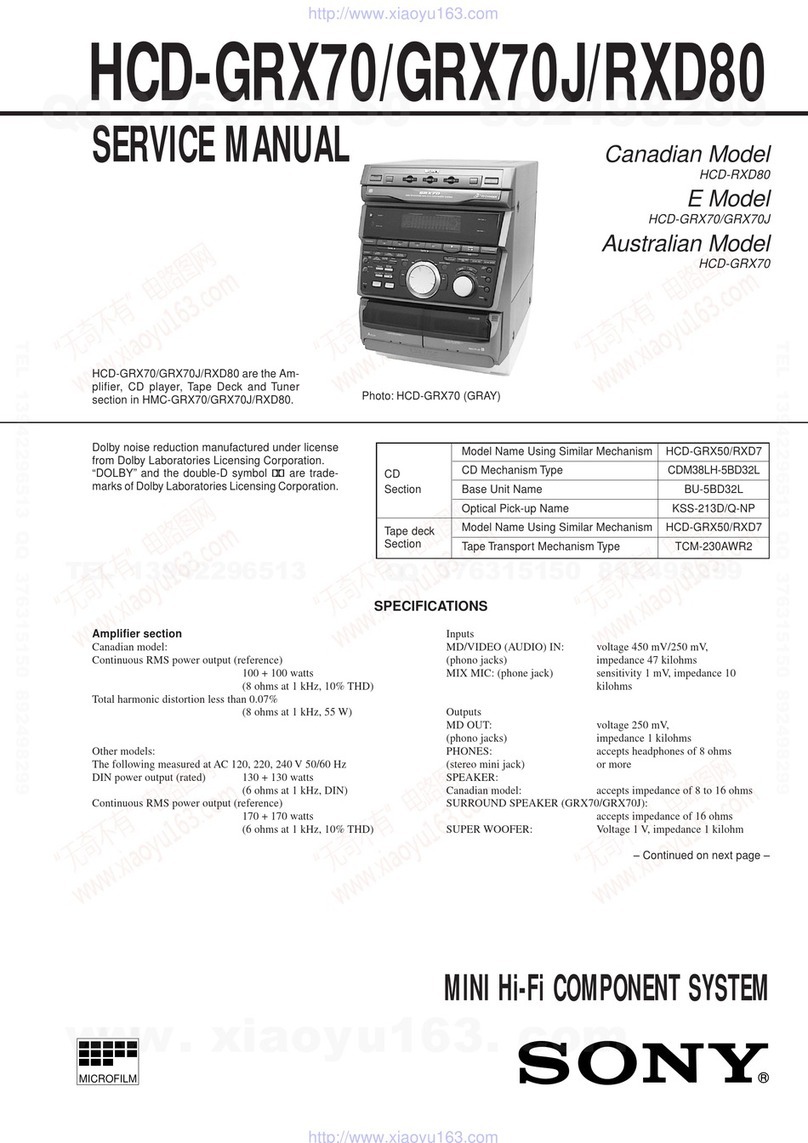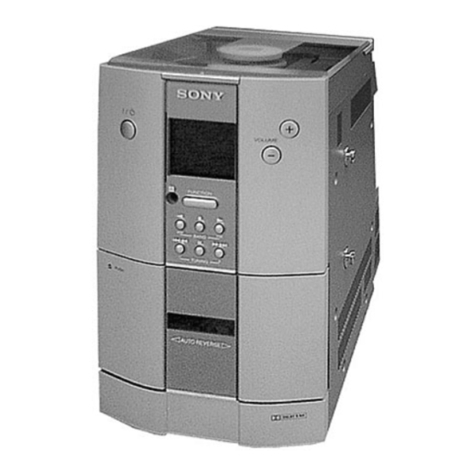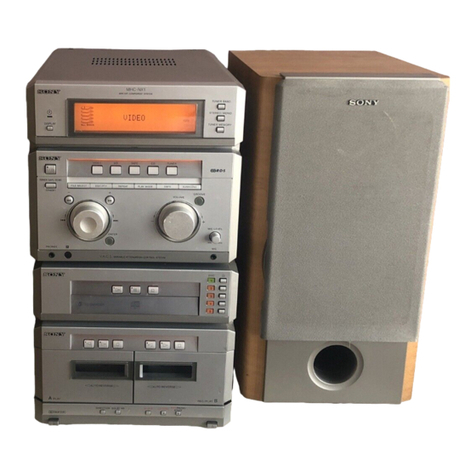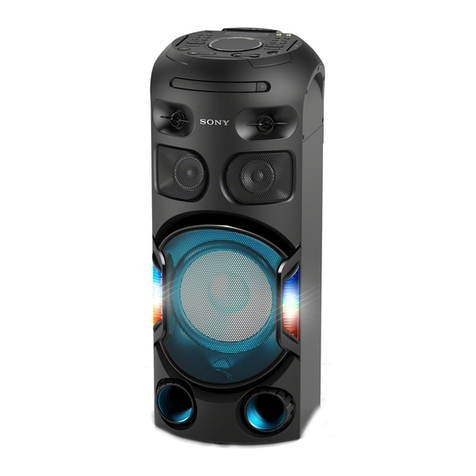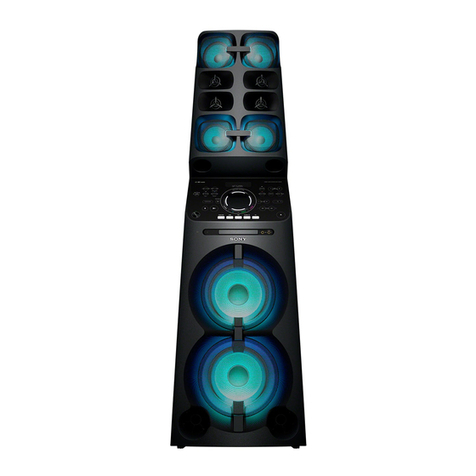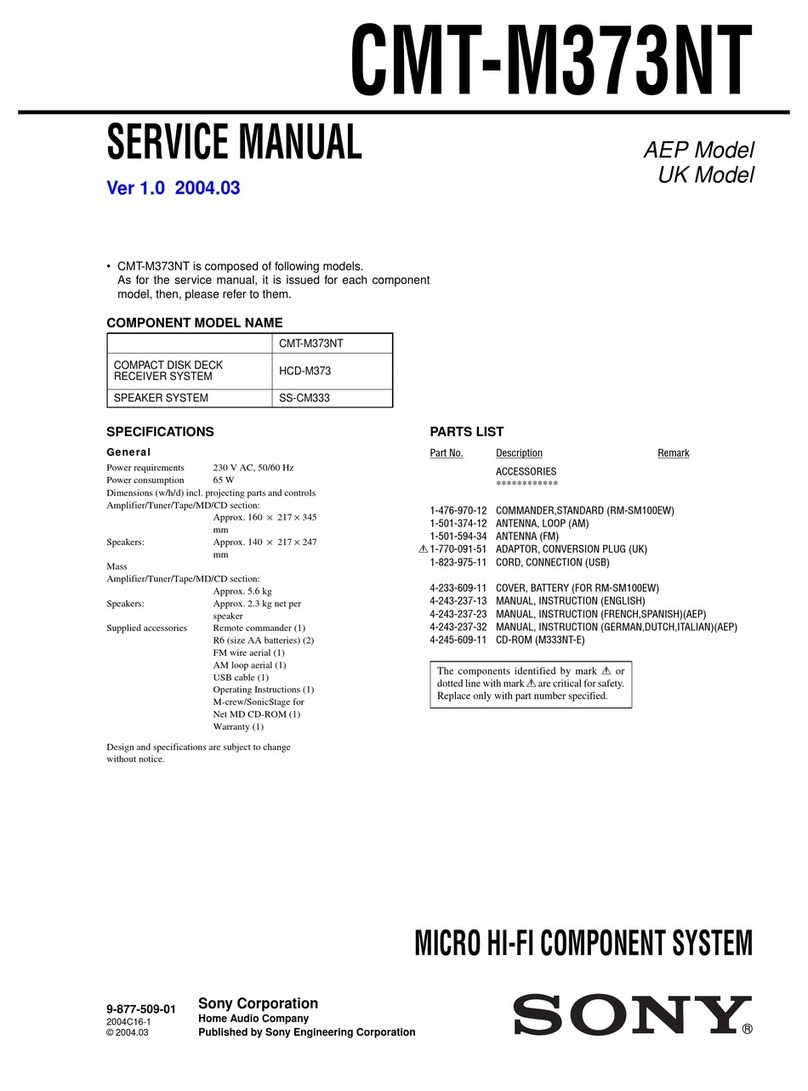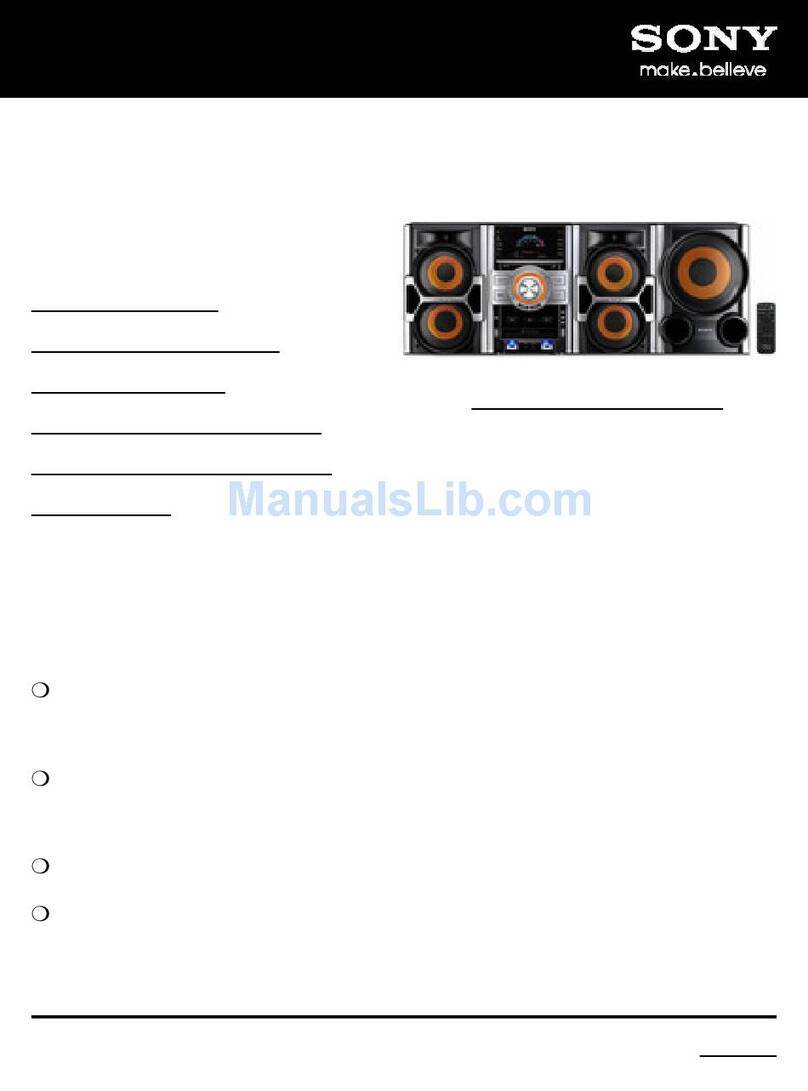HCD-SHAKE33/SHAKE77
3
1. SERVICING NOTES ............................................. 4
2. DISASSEMBLY
2-1. Overall Case.................................................................... 10
2-2. Back Panel Section ......................................................... 11
2-3. Loading Panel Assy ........................................................ 11
2-4. CDM90-DVBU202//M................................................... 12
2-5. Front Panel Section......................................................... 13
2-6. MOTHERBOARD Board............................................... 13
2-7. 4CH DAMP Board (SHAKE33),
6CH DAMP Board (SHAKE77)..................................... 14
2-8. REGULATOR, SWITCHING (3H401W) (SHAKE33),
SWITCHING REGULATOR (SSN-GBR)
(SHAKE77) .................................................................... 15
2-9. Service Optical Device, Wire (Flat Type)....................... 16
3. TEST MODE ............................................................ 17
4. ELECTRICAL CHECK ......................................... 21
5. TROUBLESHOOTING .......................................... 22
6. DIAGRAMS
6-1. Block Diagram - RS SERVO, USB Section -................. 31
6-2. Block Diagram - MAIN Section -................................... 32
6-3. Block Diagram - AMP Section (SHAKE33) -................ 33
6-4. Block Diagram - AMP Section (SHAKE77) -................ 34
6-5. Block Diagram
- PANEL, POWER SUPPLYSection -........................... 35
6-6. Printed Wiring Board
- MOTHERBOARD Board (Component Side) -............ 37
6-7. Printed Wiring Board
- MOTHERBOARD Board (Conductor Side) - ............. 38
6-8. Schematic Diagram
- MOTHERBOARD Board (1/8) - ................................. 39
6-9. Schematic Diagram
- MOTHERBOARD Board (2/8) - ................................. 40
6-10. Schematic Diagram
- MOTHERBOARD Board (3/8) - ................................. 41
6-11. Schematic Diagram
- MOTHERBOARD Board (4/8) - ................................. 42
6-12. Schematic Diagram
- MOTHERBOARD Board (5/8) - ................................. 43
6-13. Schematic Diagram
- MOTHERBOARD Board (6/8) - ................................. 44
6-14. Schematic Diagram
- MOTHERBOARD Board (7/8) - ................................. 45
6-15. Schematic Diagram
- MOTHERBOARD Board (8/8) - ................................. 46
6-16. Printed Wiring Board
- 4CH DAMP Board (SHAKE33) - ................................ 47
6-17. Schematic Diagram
- 4CH DAMP Board (SHAKE33) (1/2) - ....................... 48
6-18. Schematic Diagram
- 4CH DAMP Board (SHAKE33) (2/2) - ....................... 49
6-19. Printed Wiring Board - 6CH DAMP Board (SHAKE77)
(Component Side) -......................................................... 50
6-20. Printed Wiring Board - 6CH DAMP Board (SHAKE77)
(Conductor Side) - .......................................................... 51
6-21. Schematic Diagram
- 6CH DAMP Board (SHAKE77) (1/3) - ....................... 52
6-22. Schematic Diagram
- 6CH DAMP Board (SHAKE77) (2/3) - ....................... 53
6-23. Schematic Diagram
- 6CH DAMP Board (SHAKE77) (3/3) - ....................... 54
TABLE OF CONTENTS
6-24. Printed Wiring Board - STR Board (SHAKE33) - ......... 55
6-25. Schematic Diagram - STR Board (SHAKE33) -............ 56
6-26. Printed Wiring Board - STR Board (SHAKE77)
(Component Side) -......................................................... 57
6-27. Printed Wiring Board - STR Board (SHAKE77)
(Conductor Side) - .......................................................... 58
6-28. Schematic Diagram - STR Board (SHAKE77) -............ 59
6-29. Printed Wiring Board - FL Board (SHAKE33) -............ 60
6-30. Schematic Diagram - FL Board (SHAKE33) -............... 61
6-31. Printed Wiring Board - FL Board (SHAKE77)
(Component Side) -......................................................... 62
6-32. Printed Wiring Board - FL Board (SHAKE77)
(Conductor Side) - .......................................................... 63
6-33. Schematic Diagram - FL Board (SHAKE77) -............... 64
6-34. Printed Wiring Board - MIC Board (SHAKE33) -......... 65
6-35. Schematic Diagram - MIC Board (SHAKE33) -............ 66
6-36. Printed Wiring Board - MIC Board (SHAKE77) -......... 67
6-37. Schematic Diagram - MIC Board (SHAKE77) -............ 68
6-38. Printed Wiring Board - TUNER Board - ........................ 69
6-39. Schematic Diagram - TUNER Board -........................... 70
7. EXPLODED VIEWS
7-1. Overall Case Section....................................................... 84
7-2. Back Panel Section ......................................................... 85
7-3. FL Board, STR Board ..................................................... 86
7-4. Front Panel Section......................................................... 87
7-5. MOTHERBOARD Board Section.................................. 88
7-6. Chassis Section ............................................................... 89
7-7. CD Mechanism Section (CDM90-DVBU202//M) ......... 90
8. ELECTRICAL PARTS LIST .............................. 91
